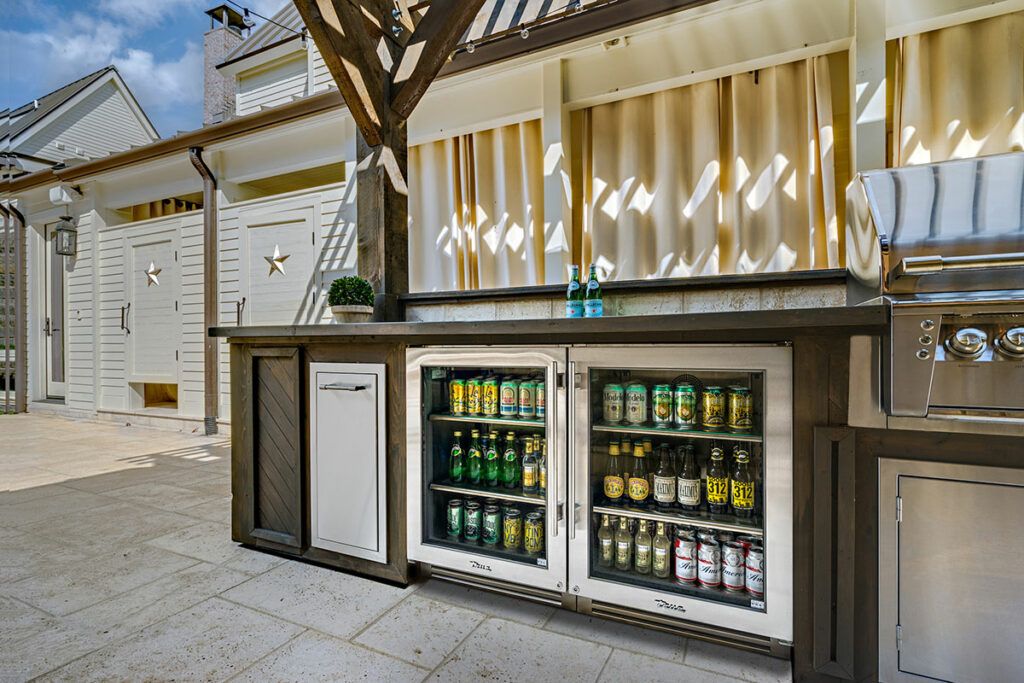
Many homeowners enjoy the convenience of having a second refrigerator, especially when it comes to their outdoor kitchen and entertaining areas. But it takes a special fridge to withstand the added pressures that outdoor elements bring—from temperature swings to unfavorable weather scenarios. The experts at Appliance Gallery share the key features and performance markers to look for in an outdoor refrigerator—and why they matter.
Precision Design for the Outdoors
Generally speaking, the average home is kept within 55 to 80 degrees year-round—perhaps in the higher part of that range in the winter and the lower part in the summer. The set-it-and-forget-it nature of a home thermostat ensures a consistent indoor temperature, which puts minimal stress on your indoor refrigerator. Outdoors is obviously a different story, as the mercury dips below freezing in the winter and can exceed triple digits in the summer, often swinging more than 40 degrees either way throughout the day. Those wildly varying temperatures require a specially designed refrigerator that is up to the challenge.
Indeed, an outdoor kitchen calls for an outdoor refrigerator. These appliances are specifically designed with superior insulation and larger, more industrial compressors to ensure food is kept at the ideal temperature. Additionally, you’ll want a refrigerator that was exclusively designed to tolerate wind, rain, humidity, and anything else Mother Nature delivers.
Look for a fridge that is crafted from 304 food-grade stainless steel, which won’t rust. Plus, the all-over steel design keeps the appliance’s electrical components and coils protected from the outdoor elements, ensuring the appliance functions reliably for its intended lifespan.
Make it Last
An outdoor refrigerator will typically cost more than one that’s designed for indoor use. This is due, in large part, to the more durable materials and manufacturing requirements that ensure it functions properly in an outdoor setting. So when you’re making that added investment in an outdoor fridge, do your part to ensure it lasts.
Consider its placement. Ensure the refrigerator is as protected as possible from the elements or extreme temperature changes. If your space allows, put it out of direct sunlight and under cover. And if you won’t be using your outdoor kitchen in the winter months, empty the fridge, and unplug and clean it, ensuring it’s completely dry to prevent mold from forming while not in use.
When you’re ready to shop for an outdoor refrigerator, the experts at Appliance Gallery can help you select the perfect option for your outdoor living space!





